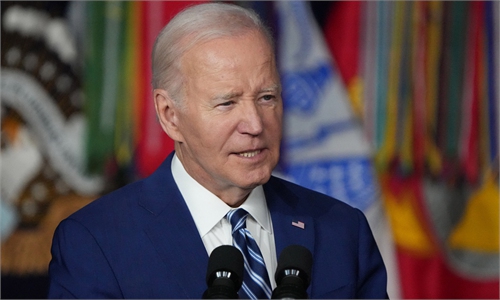Robot arms make automobiles in a factory in Qingdao, East China's Shandong province on Dec 20, 2022. [Photo/Xinhua]

Economic engine: Cargo ships at Qingdao port in China. — AFP
Steven Barnett, senior resident representative of the IMF in China, said although the fund has revised down its GDP growth forecast for China, the country is expected to contribute roughly one-third of global growth this year and next.
According to the IMF's World Economic Outlook in October, global economic output is forecast to expand by 3 percent this year, to which China is expected to contribute 0.9 percentage point, Barnett said.
He made the remarks at a launch of the publication in Beijing on Friday. The event was organized by the IMF Resident Representative Office in China and the International Monetary Institute at the Renmin University of China.
By comparison, the United States is forecast to contribute 0.3 percentage point while India's contribution might be 0.5 percentage point, Barnett told China Daily on the sidelines of the event.
In 2024, China is forecast to contribute 0.8 percentage point of the 2.9 percent global growth, just under one-third and still higher than 0.2 percentage point of the US and 0.5 percentage point of India, he said.
The WEO, published on Tuesday, has lowered the 2023 economic growth forecast for China to 5 percent from 5.2 percent, citing the pressures brought by the weakness in the real estate sector.
According to Zou Lan, head of the People's Bank of China's monetary policy department, the country's real estate market has recently seen positive changes, with reviving housing market transaction activity in key cities and marginal improvements in home sales and market expectations.
In terms of credit, real estate development loans and personal mortgages issued by major banks increased by more than 100 billion yuan ($13.68 billion) in September compared with August, Zou said at a news conference on Friday.
Zou also said the central bank's efforts to reduce the interest burden of existing mortgages have made rapid progress as 49.73 million in mortgages — representing 98.5 percent of the mortgages eligible for interest rate reduction and worth 21.7 trillion yuan in total — had interest rates reduced during the week starting Sept 25.
The weighted average interest rate of those mortgages decreased by 0.73 percentage point on average to a weighted average of 4.27 percent, Zou said, adding the alleviated interest rate burden will help boost investment and consumption.
While China faces real estate headwinds, it has the scope to boost the economy by reorienting fiscal stimulus to consumer spending and implementing further monetary accommodation given the lack of inflationary pressure, Barnett said.
To boost medium-term growth, it is critical for China to accelerate structural reforms, without which China's growth could slow to 3.4 percent in 2028, resulting in a slightly lower contribution to global growth of less than a quarter, Barnett said.
Ruan Jianhong, a PBOC spokeswoman, said China's central bank will continue to implement a sound monetary policy in a targeted and effective manner, aiming for overall and lasting improvements in economic performance.
Ruan said the country's macroeconomic leverage ratio came in at 291 percent for the second quarter of the year, up 9.4 percentage points compared with the end of last year and up 1.5 percentage points from the end of the first quarter.
Adding to signs that China's economic recovery is gaining momentum, financing activity picked up in September as the increment in aggregate social financing — the total amount of financing to the real economy — amounted to 4.12 trillion yuan, up by 563.8 billion yuan from a year earlier, the PBOC said on Friday.
The amount was also up from 3.12 trillion yuan in August and beat the market expectations of about 3.7 trillion yuan.
- BRI provides clear path for world in turbulence to restore ‘peace, development’ A foreigner is being interviewed by Chinese journal...















